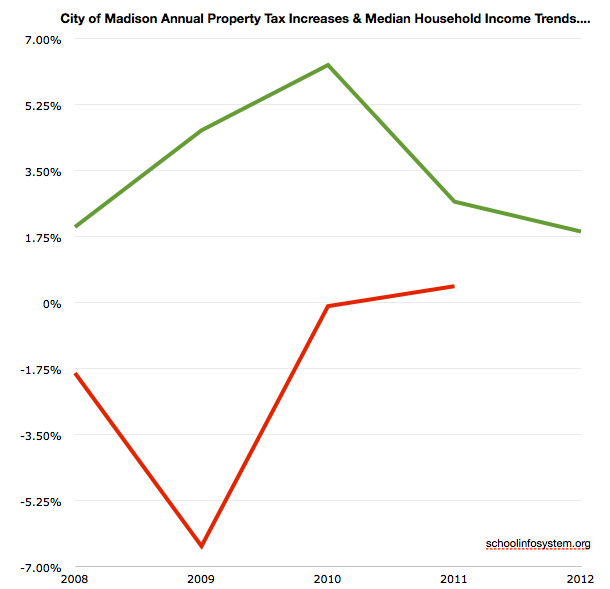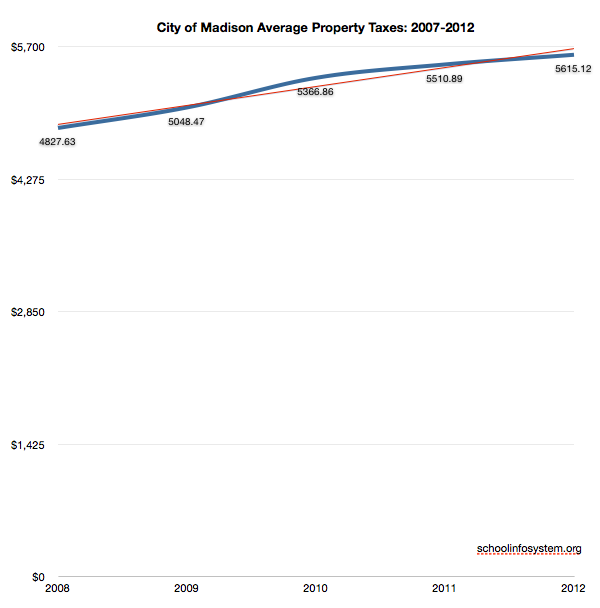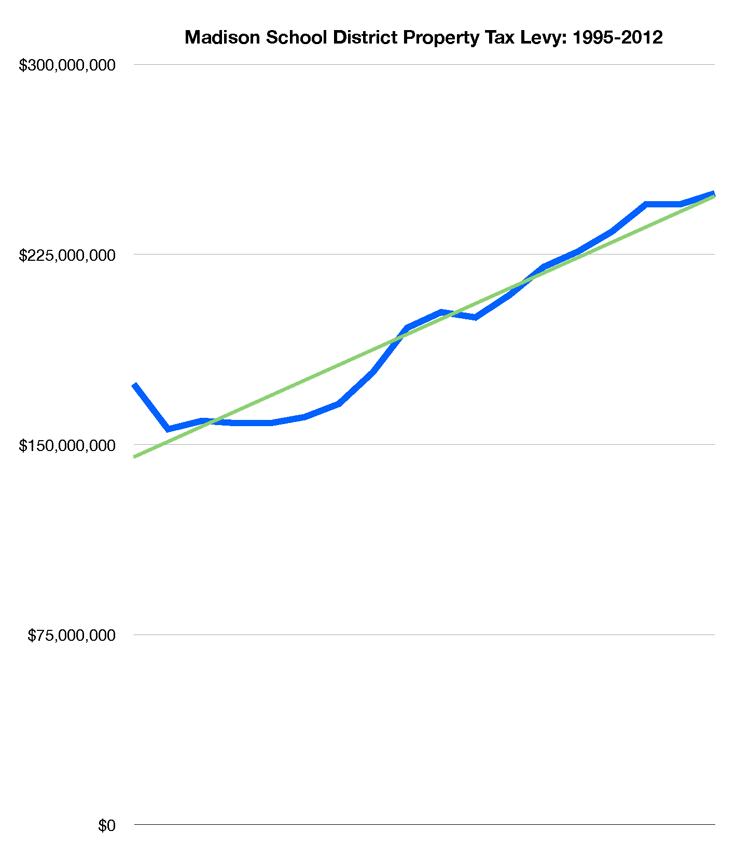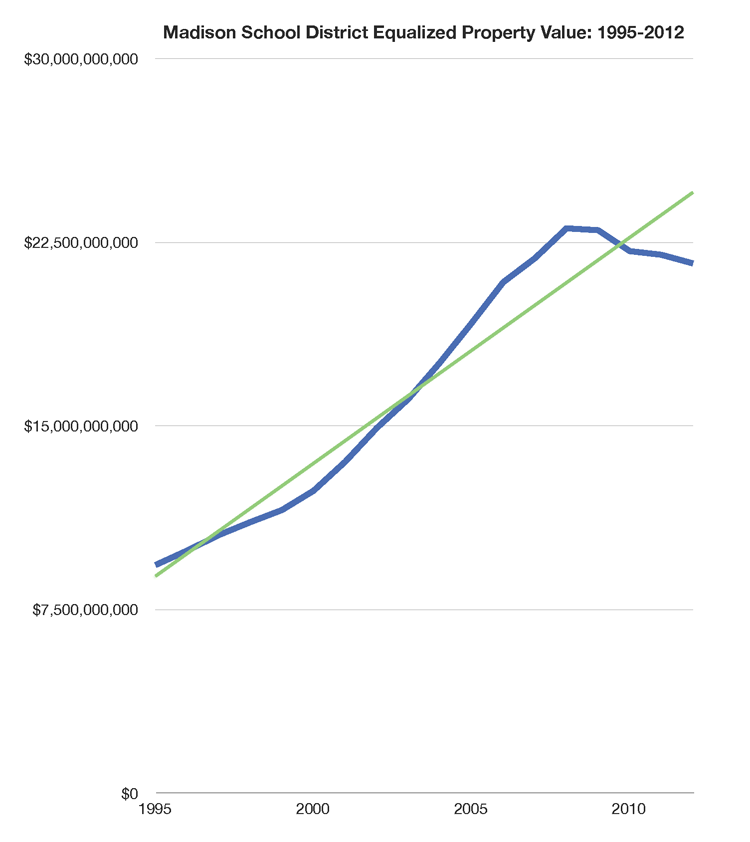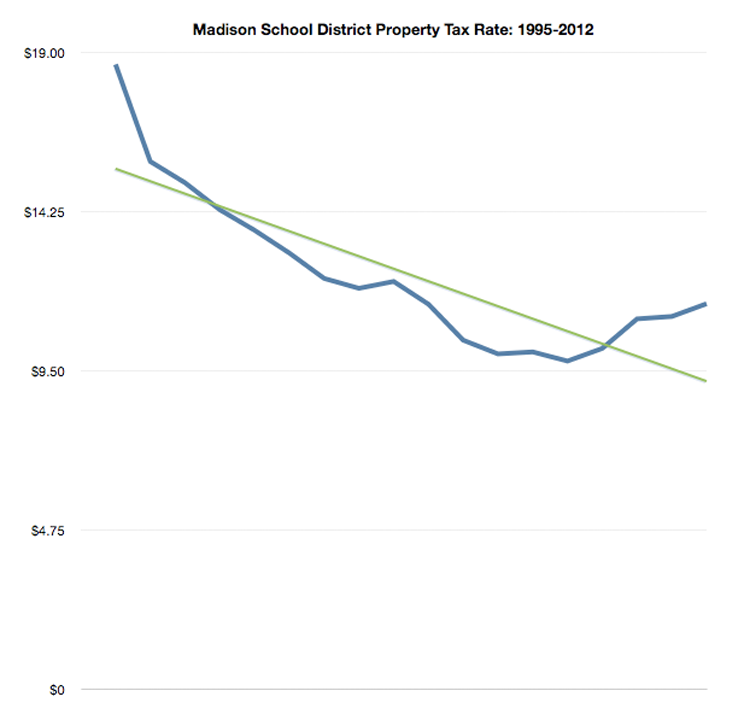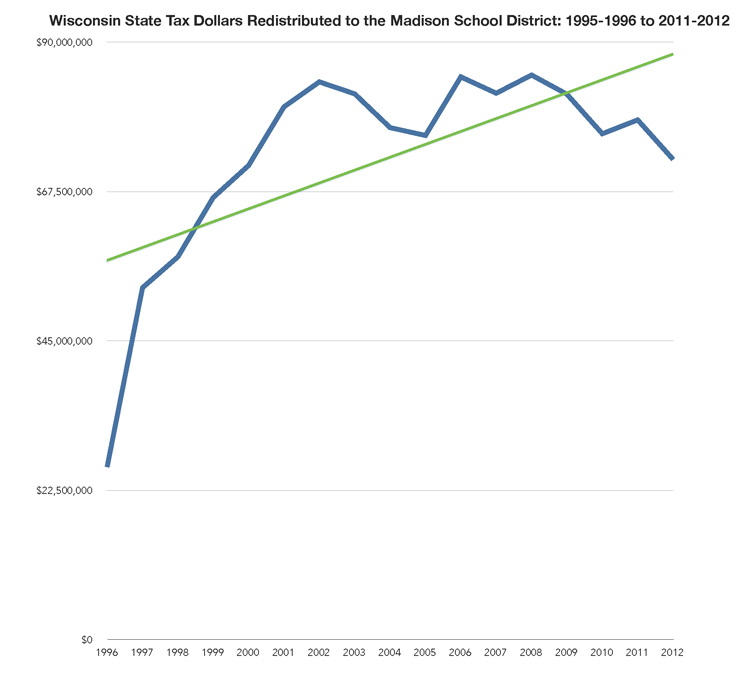Search Results for: oconomowoc governance
Notes on K-12 Governance Battles: Georgia Edition and Oconomowoc
Nicole Carr: Nearly 900 school districts across the country have been targeted by anti-CRT efforts from September 2020 to August 2021, researchers at the University of California, Los Angeles, and the University of California, San Diego, found. Teachers and district equity officers surveyed and interviewed for the report “often described feeling attacked and at risk for […]
Governance: Changing Expectations in Oconomowoc – Paying Fewer High School Teachers More
In a move sure to capture the attention of school districts across the state grappling with how to reallocate resources in a time of reduced funding, the Oconomowoc Area School District administration on Tuesday proposed a profound restructuring of its high school, cutting staff and demanding the remaining educators take on more teaching duties.
The kicker: Those remaining staffers would each get a $14,000 annual stipend.
The plan requires reducing Oconomowoc High School’s core teaching force by about 20% – from about 75 to about 60 people – across the departments of math, science, social studies, language arts, foreign language, physical education and art, Oconomowoc Superintendent Pat Neudecker said Tuesday before a school board meeting where the plan’s details were released.
Oconomowoc’s dramatic step reflects a district responding to reduced resources amid an urgent push to reshape teaching, with newfound leeway to adjust compensation, staffing and school structures without having to bargain with unions.
“We haven’t ever moved around the pieces in education like this,” Neudecker said, adding that even with the stipends next year, the district would save $500,000 annually under the new plan.
“Our expectations are changing for teachers, but we’re also going to deploy resources to help them change,” Neudecker said.Structural change rather than just ongoing, overall spending increases.
Oconomowoc’s 2011-2012 budget is $51,381,000 for 5,211 students results in per student spending of $9,860, 33% less than Madison. Madison’s 2011-2012 budget spends $369,394,753 for 24,861 = $14,858.40/student.
Update: Alan Borsuk:Oconomowoc Superintendent Pat Neudecker calls the plan “the right thing to do for our students, our schools and the teaching profession.” Even before the financial belt got much tighter across Wisconsin, she was an advocate of changing classroom life to take better advantage of technology and make education more customized for students. Neudecker is currently president of the American Association of School Administrators; she was a leading figure in developing a statement issued by a group of Milwaukee area educators in 2010 that called for these kinds of changes.
Now, talk turns into action. Act 10, the Republican-backed state law that pretty much wiped out the role of teachers unions in school life, and cuts in education spending create the landscape for Oconomowoc to make big changes.
Oconomowoc High uses a block schedule, which means its days are built around four periods of about 90 minutes each, rather than, say, seven of 50 minutes. Generally, teachers teach three blocks and get one to work on things such as preparation. (If you think three blocks is a fairly light schedule, that’s because you haven’t done it.)
There is a big need to reduce spending for next year. For many school districts, that is going to mean reducing staff, keeping a tight grip on salary and benefits (as allowed now by state law), reducing offerings and increasing some class sizes – the four pillars of school cost cutting.
Madison Governance Status Quo: Teacher “Collective Bargaining” Continues; West Athens Parent Union “Bargains Like any other Union” in Los Angeles
Ben Austin, via a kind email: Last week was an important moment in the Parent Power movement. On Friday, LAUSD Superintendent John Deasy came to West Athens Elementary School in South LA to sign a groundbreaking Partnership Agreement with the leadership of the West Athens Parents Union, called the “Aguilas de West Athens” (AWA) – […]
The Dichotomy of Madison School Board Governance: “Same Service” vs. “having the courage and determination to stay focused on this work and do it well is in itself a revolutionary shift for our district”.
The dichotomy that is Madison School Board Governance was on display this past week.
1. Board Member TJ Mertz, in light of the District’s plan to continue growing spending and property taxes for current programs, suggests that “fiscal indulgences“:Tax expenditures are not tax cuts. Tax expenditures are socialism and corporate welfare. Tax expenditures are increases on anyone who does not receive the benefit or can’t hire a lobbyist…to manipulate the code to their favor.
be applied to certain school volunteers.
This proposal represents a continuation of the Districts’ decades long “same service” approach to governance, with declining academic results that spawned the rejected Madison Preparatory IB Charter School.
2. Madison’s new Superintendent, Jennifer Cheatham introduced her “Strategic Framework” at Wednesday’s Downtown Rotary Club meeting.
The Superintendent’s letter (jpg version) (within the “framework” document) to the Madison Community included this statement (word cloud):Rather than present our educators with an ever-changing array of strategies, we will focus on what we know works and implement these strategies extremely well. While some of the work may seem familiar, having the courage and determination to stay focused on this work and do it well is in itself a revolutionary shift for our district. This is what it takes to narrow and eliminate gaps in student achievement.
The Madison School Board’s letter (jpg version) to the community includes this statement:
Public education is under sustained attack, both in our state and across the nation. Initiatives like voucher expansion are premised on the notion that public schools are not up to the challenge of effectively educating diverse groups of students in urban settings.
We are out to prove that wrong. With Superintendent Cheatham, we agree that here in Madison all the ingredients are in place. Now it is up to us to show that we can serve as a model of a thriving urban school district, one that seeks out strong community partnerships and values genuine collaboration with teachers and staff in service of student success.
Our Strategic Framework lays out a roadmap for our work. While some of the goals will seem familiar, what’s new is a clear and streamlined focus and a tangible and energizing sense of shared commitment to our common goals.
The bedrock of the plan is the recognition that learning takes place in the classroom in the interactions between teachers and students. The efforts of all of us – from school board members to everyone in the organization – should be directed toward enhancing the quality and effectiveness of those interactions.
There is much work ahead of us, and the results we are expecting will not arrive overnight. But with focus, shared effort and tenacity, we can transform each of our schools into thriving schools. As we do so, Madison will be the school district of choice in Dane County.Madison School Board word cloud:
North Carolina Gov. Pat McCrory, a Republican, signed a budget bill Friday that eliminates teacher tenure and–in a rare move–gets rid of the automatic pay increase teachers receive for earning a master’s degree.
The legislation targets a compensation mechanism that is common in the U.S., where teachers receive automatic pay increases for years of service and advanced degrees. Some research has suggested those advanced degrees don’t lead to improved teaching.
Although a few other states have talked about doing away with the automatic pay increase for advanced degrees, experts say North Carolina is believed to be the first state to do so.
The budget bill–which drew hundreds of teachers to the Capitol in protest earlier this week–also eliminates tenure for elementary and high-school teachers and freezes teacher salaries for the fifth time in six years.
It comes as states and districts across the country are revamping teacher evaluations, salaries and job security, and linking them more closely to student performance. These changes have been propelled, in part, by the Obama administration and GOP governors.The challenge for Madison is moving away from long time governance structures and practices, including a heavy (157 page pdf & revised summary of changes) teacher union contract. Chris Rickert’s recent column on Madison’s healthcare practices provides a glimpse at the teacher – student expenditure tension as well.
Then Ripon Superintendent Richard Zimman’s 2009 Madison Rotary speech offers important background on Madison’s dichotomy:“Beware of legacy practices (most of what we do every day is the maintenance of the status quo), @12:40 minutes into the talk – the very public institutions intended for student learning has become focused instead on adult employment. I say that as an employee. Adult practices and attitudes have become embedded in organizational culture governed by strict regulations and union contracts that dictate most of what occurs inside schools today. Any impetus to change direction or structure is met with swift and stiff resistance. It’s as if we are stuck in a time warp keeping a 19th century school model on life support in an attempt to meet 21st century demands.” Zimman went on to discuss the Wisconsin DPI’s vigorous enforcement of teacher licensing practices and provided some unfortunate math & science teacher examples (including the “impossibility” of meeting the demand for such teachers (about 14 minutes)). He further cited exploding teacher salary, benefit and retiree costs eating instructional dollars (“Similar to GM”; “worry” about the children given this situation).
“Budget Cuts: We Won’t Be as Bold and Innovative as Oconomowoc, and That’s Okay”.
One year in, Oconomowoc High School staff, students adjusting to change
Time, time, time, see what’s become of Oconomowoc High School.
The nearly 1,500-student high school 30 miles west of Milwaukee attracted a lot of attention a year ago with a transformation plan: Reduce the staff, give most teachers increased workloads and pay, and implement learning approaches that call for more initiative by students and a lot of technology.
As Superintendent Patricia Neudecker (now retired) and high school Principal Joseph Moylan saw it, it was a way to tighten spending while personalizing and improving learning. As critics, including many teachers and students, saw it, it was a way to make things worse.
One year into the new reality, Oconomowoc High still stands. The critics haven’t been proved wrong, but it appears it was a pretty decent year by many measures. Change did not derail the basic flow of a healthy, energetic school and in some ways it helped. But there are signs of the stress the approach is putting on all involved, and change does not come easily.
With a bow to Simon and Garfunkel (“Hazy Shade of Winter,” of course), consider this an update focused on time, time, time.
Teachers’ time: For about a decade, the high school has used a block schedule, which means the school day is built around four longer periods rather than six or seven periods. The conventional teaching load in such a situation is three blocks a day. Many Oconomowoc teachers now teach all four blocks, which means they are in front of students just about all day.
Neudecker said the change was made to reduce staff and save money without reducing offerings to students. “We haven’t cut one program,” she said. “We have not increased our class size.”
In exchange for the heavier workload, teachers receive an additional $14,000 a year. For those affected, that has raised salaries to $50,000 at the starting level and $70,000 or more for experienced teachers.Related: May, 2012: Budget Cuts: We Won’t Be as Bold and Innovative as Oconomowoc, and That’s Okay. Indeed. Madison appears to have mastered the art of status quo governance.
Governance: The Acquisition of Knowledge
Today, instead of deferring to long practical experience, and deep knowledge of a particular place, managers prefer to implement ‘best practice’ from somewhere else; they impose theoretical models with less and less understanding of what does not work on the ground; and they justify decisions with abstract metrics, and obscure concepts. And as more and more positions are filled with people with this mentality, there are fewer people, with the confidence, or seniority, to expose the shallowness of this approach. Our culture is beginning to forget what deep knowledge and contact with the ground looked like, or why it mattered.
The solution must be to give power back to people with deep knowledge. But it won’t happen through running training courses. You need to force institutions to change their promotion criteria, and put those with knowledge, judgement and experience back at the very top. Some of them might not be ideal managers: they might be less popular with staff, unappealing to stake-holders, more difficult to work with. But they can offer things we have forgotten how to measure: not just long experience, but rigour, a sense of vocation, and unexpected frames of reference. They might have prevented some of our recent mistakes. They could certainly bring more flexible and inventive ways of engaging with the world. And we cannot afford to continue to ignore them.Something to consider in light of Oconomowoc’s planned changes.
$9,860/student vs. $14,858.40/student; Paying for Educational Priorities and/or Structural Change: Oconomowoc vs. Madison
Chris Rickert summarizes a bit of recent Madison School Board decision making vis a vis educational outcomes. Contrast this with the recent governance news (more) from Oconomowoc; a community 58 miles east of Madison.
Moreover, it’s not like Madisonians are certain to oppose a large tax hike, especially given the way they responded to Walker’s bid to kill collective bargaining.
Before that idea became law, the board voted for — and the community supported — extending union contracts. Unions agreed to some $21 million in concessions in return for two years’ worth of protection from the law’s restrictions.
But the board could have effectively stripped the union of seniority protections, forced members to pay more for health insurance, ended automatic pay raises and taken other actions that would have been even worse for union workers — but that also would have saved taxpayers lots of money.
Board members didn’t do that because they knew protecting employees was important to the people they represent. They should be able to count on a similar dedication to public schooling in asking for the money to pay for the district’s latest priorities.The changes would have a significant effect on teachers that the district retains. Starting positions – though it’s unclear how many would be available due to the staff reduction – would go from starting at a $36,000 salary to a $50,000 stipend. The average teacher in the district would see his or her pay rise from $57,000 to $71,000. It’s a move that would not only reward educators for the extra work that they would take on, but could also have a significant effect in luring high-level teachers to the district.
In essence, the district is moving forward with a plan that will increase the workload for their strong teachers, but also increase their pay to reflect that shift. In cutting staff, the district has the flexibility to raise these salaries while saving money thanks to the benefit packages that will not have to be replaced. Despite the shuffle, class sizes and course offerings will remain the same, though some teachers may not. It’s a bold move to not only retain the high school’s top performers, but to lure good teachers from other districts to the city.
Tuesday’s meeting laid out the first step of issuing non-renewal notices to the 15 teachers that will not be retained. The school board will vote on the reforms as a whole on next month.The Madison School District has, to date, been unwilling to substantively change it’s model, one that has been around for decades. The continuing use of Reading Recovery despite its cost and lower than average performance is one example.
With respect to facilities spending, perhaps it would be useful to look into the 2005 maintenance referendum spending & effectiveness.
It is my great “hope” (hope and change?) that Madison’s above average spending, in this case, 33% more per student than well to do Oconomowoc, nearby higher education institutions and a very supportive population will ultimately improve the curriculum and provide a superior environment for great teachers.
Oconomowoc plan a recipe for burnout
I have taught 28 years in the Oconomowoc Area School District, the last 25 at Oconomowoc High School. I am retiring at the end of this year so I have some perspective on the proposed “transformation” of the high school. I also have the luxury of being able to speak my mind without fear of repercussion.
Media coverage has focused on how the transformation is a bold educational innovation. However, there is more to the story.
For most of the years I have taught, there has been a genuine feeling of collaboration and teamwork among administrators, teachers and support staff. That has quickly eroded this past year into a culture of fear. Teachers fear that by speaking up, by questioning, they may be putting their careers in jeopardy.
I do not believe this is the kind of culture our school administration wants, but it is what we have. And now they are going to compound this situation by taking away the most valuable resource a teacher has: time.
I have been, as have many teachers, to many workshops over the years where innovative and exciting ideas and programs have been put forth on how to better meet the needs of students. Teachers come away thinking: If only we could . . . well we could . . . if we had the time.
Without a doubt, the No. 1 limiting factor in the successful implementation of new ideas and programs is time – the time to read, to mull over, to discuss, to plan, the time to create, to implement, to evaluate and to make changes.Oconomowoc Superintendent Pat Neudecker calls the plan “the right thing to do for our students, our schools and the teaching profession.” Even before the financial belt got much tighter across Wisconsin, she was an advocate of changing classroom life to take better advantage of technology and make education more customized for students. Neudecker is currently president of the American Association of School Administrators; she was a leading figure in developing a statement issued by a group of Milwaukee area educators in 2010 that called for these kinds of changes.
Now, talk turns into action. Act 10, the Republican-backed state law that pretty much wiped out the role of teachers unions in school life, and cuts in education spending create the landscape for Oconomowoc to make big changes.
Oconomowoc High uses a block schedule, which means its days are built around four periods of about 90 minutes each, rather than, say, seven of 50 minutes. Generally, teachers teach three blocks and get one to work on things such as preparation. (If you think three blocks is a fairly light schedule, that’s because you haven’t done it.)
There is a big need to reduce spending for next year. For many school districts, that is going to mean reducing staff, keeping a tight grip on salary and benefits (as allowed now by state law), reducing offerings and increasing some class sizes – the four pillars of school cost cutting.
Madison’s Schwerpunkt: Government School District Power Play: The New Handbook Process is worth a look
Wisconsin’s stürm and drang over “Act 10” is somewhat manifested in Madison. Madison’s government schools are the only Wisconsin District, via extensive litigation, to still have a collective bargaining agreement with a teacher union, in this case, Madison Teachers, Inc. The Madison School Board and Administration are working with the local teachers union on a […]
Mayor Paul Soglin Discusses Education Reform with U.S. Secretary of Education Arne Duncan
City of Madison, via a kind reader’s email:
Mayor Paul Soglin joined U.S. Secretary of Education Arne Duncan, other mayors and school superintendents in Washington, DC, today to discuss partnership opportunities between cities and the U.S. Department of Education to foster effective approaches to education reform.
Participating city leaders are part of a new Mayors’ Education Reform Task Force co-chaired by National League of Cities (NLC) First Vice President Chris Coleman, Mayor of Saint Paul, MN, and NLC Second Vice President Ralph Becker, Mayor of Salt Lake City, UT. Mayors Coleman and Becker formed the task force in March 2013 to explore how cities can and should be involved in local education reform efforts.
During today’s meeting, task force members highlighted the growing commitment by municipal officials across the country to promoting educational achievement.
“Mayors and elected officials can bring together all the stakeholders in the education conversation in their cities,” said Mayor Soglin. “The perspectives from mayors of cities large to small are valuable to local and national policymakers. I’m glad we had an opportunity to talk with the Secretary and his staff about the role mayors can play in education transformation.”
Local leaders shared examples of city-school partnerships they have formed in their communities in areas such as school improvement, early learning, afterschool programming, and postsecondary success.
“The trajectory of learning begins at birth and extends over a lifetime,” said Mayor Becker, who was unable to attend the meeting. “Cities now experience an unprecedented level of collaboration and discussion in formulating specific plans for postsecondary access and success and productive out-of-school time learning.”
The meeting with Secretary Duncan provided mayors with an opportunity to discuss how lessons learned at the city level can inform federal education policy. Among the key issues of concern identified by the task force are:
- Finding a “third way” in education reform that balances a commitment to accountability with a spirit of collaboration among school administrators, teachers, and cities;
- Transforming schools into centers of community that support parent engagement and provide wraparound services to children and families;
- Building on successful “cradle-to-career” models to develop a strong educational pipeline;
- Securing adequate and equitable funding for local education initiatives; and
- Promoting college access and completion.
“In this global economy, cities and towns depend on an educated workforce and schools are depending on us. We need to work together to ensure that our children graduate high school ready for postsecondary education and career success,” said NLC President Marie Lopez Rogers, Mayor of Avondale, AZ. “As city leaders, we have an important message that must be heard and we must be at the table in guiding federal and local education reform policies.”
In addition to Mayors Soglin, Coleman and Becker participants in today’s meeting included: Mayor Karen Freeman-Wilson of Gary, Indiana; Mayor Edna Branch Jackson of Savannah, Georgia; Mayor Dwight Jones of Richmond, Virginia; Mayor Pedro Segarra of Hartford, Connecticut; Riverside (Calif.) Unified School District Superintendent Rick Miller; Gary Community School Corporations Superintendent Cheryl Pruitt; and New York City Deputy Chief Academic Officer Josh Thomases.
The National League of Cities (NLC) is dedicated to helping city leaders build better communities. NLC is a resource and advocate for 19,000 cities, towns and villages, representing more than 218 million Americans.Related:
- www.wisconsin2.org
- Budget Cuts: We Won’t Be as Bold and Innovative as Oconomowoc, and That’s Okay.
- Madison’s disastrous reading results.
- Analysis: Madison School District has resources to close achievement gap
- Status quo governance
- Minneapolis teacher’s union approved to authorize charter schools
- A majority of the Madison School Board rejected the proposed Madison Preparatory IB Charter School.
- Wisconsin State Journal columnist Chris Rickert appears to correlate the “achievement gap strategy and education outcomes with money spent. Madison has long spent more per student than most districts.
The recent “expert review” concluded that the “Madison School District has resources to close achievement gap“.
We have seen the results of an ongoing “same service” approach to school spending. There are no indications that this is changing.
A Look at Property Taxes Around the World and Madison’s 16% increase since 2007; Median Household Income Down 7.6%; Middleton’s 16% less
Sources:
Department of Numbers.
City of Madison Assessor Reports
Related:
August, 2006 (Deja-vu): Property Taxes Outstrip Income.
Budget Cuts: We Won’t Be as Bold and Innovative as Oconomowoc, and That’s Okay.
Madison Schools’ 2013-2014 Budget Charts, Documents, Links, Background & Missing Numbers.
Madison’s long-term disastrous reading results.
The Hated Property Tax: Salience, Tax Rates, and Tax Revolts.
Levying the Land.
Revenue Potential and Implementation
Challenges (IMF PDF).
Tax Policy Reform and Economic Growth (OECD).
Stagnant School Governance; Tax & Spending Growth and the “NSA’s European Adventure”.
Analysis: Madison School District has resources to close achievement gap.
A Middleton home paid $4,648.16 in 2012 while a Madison home paid 16% more, or $5,408.38. Local efforts to significantly increase property taxes may grow the gap with Middleton..


